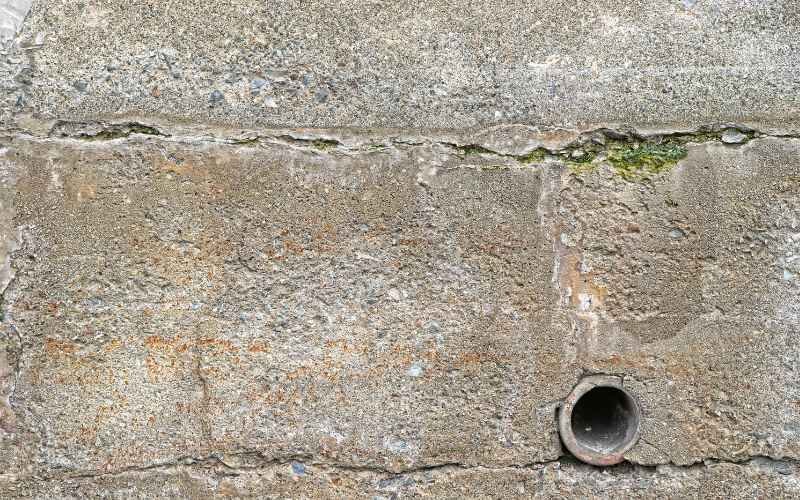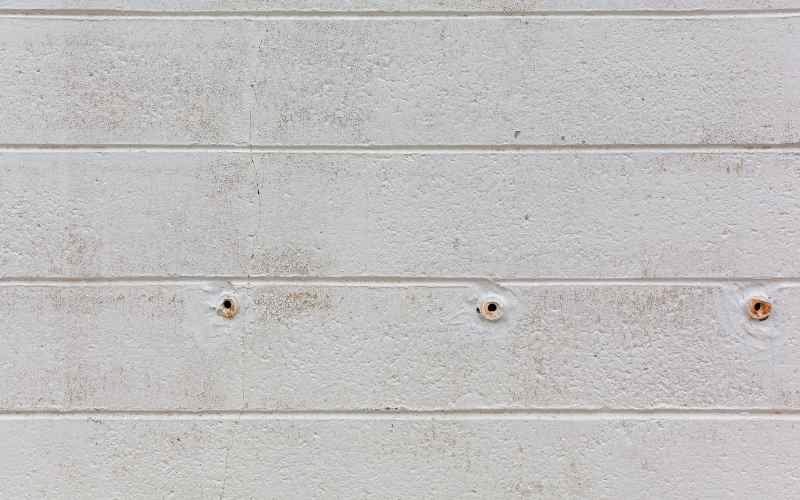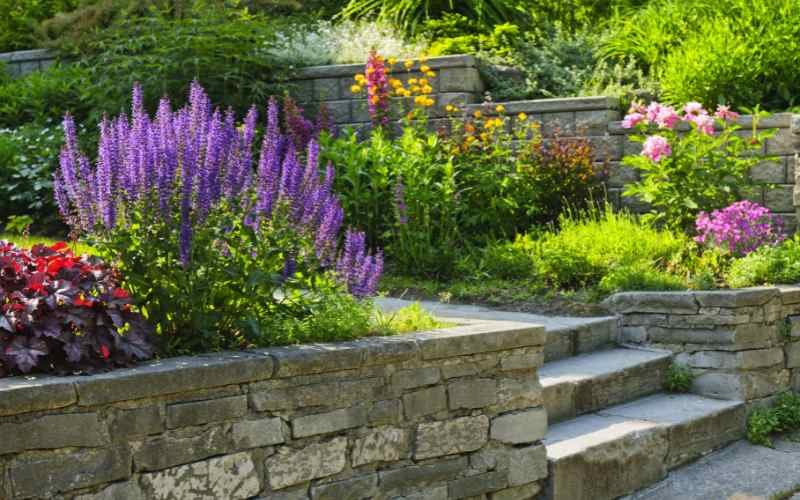“In Melbourne, retaining walls account for thousands of dollars in repairs each year, most of them caused not by poor materials, but by poor drainage.”
That’s the hard truth. Water is a quiet force, and when it builds up behind a retaining wall with no way out, it creates hydrostatic pressure strong enough to push, crack, and even knock down a structure that is otherwise strong. Most of the time, the wall itself isn’t the problem; it’s what’s going on behind it.
Your retaining wall drainage system probably isn’t working right if you’ve seen cracks forming, soil bulging, or water pooling near your property. And here’s the thing: fixing drainage behind retaining walls costs far less than rebuilding a collapsed wall. That’s why understanding how drainage works and how to prevent failures is one of the smartest investments you can make in protecting your property.
In this article, we’ll break down the essentials: what causes retaining wall drainage failures, the right types of drainage systems (from weep holes to French drains), the best backfill material for Melbourne’s clay-heavy soils, and the tell-tale signs your wall may already be under stress. You’ll also learn what local regulations say, what installation really costs, and when to call in the professionals.
As a company specialising in retaining walls and expert landscaping in Melbourne, we’ve seen the difference proper drainage makes not just for safety, but for the long-term beauty of your garden and outdoor living spaces. These tips will help you avoid costly repairs and keep your landscape strong, stable, and beautiful, whether you’re putting up a new wall or taking care of an old one.
Why Retaining Wall Drainage Matters

When most people think about retaining walls, they think about the parts that are easy to see, like stone, concrete sleepers, or wood finishes that frame a garden. But what is behind the wall is even more important.
Without proper drainage, water saturates the backfill soil, increasing its weight. This creates hydrostatic pressure, the number one cause of retaining wall failure. Even the strongest wall can’t withstand this invisible force for long.
Hydrostatic pressure means that a cubic metre of saturated soil can weigh more than 2,000 kg. Multiply that across a long wall, and the pressure is enormous.
Melbourne conditions: Our city’s clay-heavy soils hold onto water, so drainage is even more important here than in sandy areas.
Risk factors: Not preparing the site properly, not having weep holes, or using the wrong backfill material can lead to big problems in just a few years.
Common Signs of Retaining Wall Drainage Failure
Not sure if there’s a problem with your wall? Watch out for these signs:
- If you see cracks or things leaning, that’s a clear sign that pressure is building up.
- Bulging or bowing: Parts of the wall push out.
- Water stains or seepage marks are signs that water is stuck.
- Water pooling near the base means that the drainage path isn’t working right.
- Water pushing its way through gaps in front of the wall is causing erosion.

The earlier these problems are detected, the cheaper and easier they are to fix. Left unchecked, the wall could collapse entirely. That’s why a lot of Mount Waverley homeowners hire professionals for landscaping to make sure their retaining walls are built and kept up properly.
Types of Drainage Systems for Retaining Walls
So how do you prevent water pressure from destroying your investment? By installing the right drainage system behind your retaining wall.
Weep Holes
- Small, evenly spaced openings in the wall itself.
- Allow water to escape naturally.
- Necessary for walls made of concrete or blocks.
French Drains
- Perforated pipes placed behind the wall at the base.
- Surrounded by gravel to filter water through.
- Excellent for larger walls or water-prone areas.
Backfill Material
- Use free-draining gravel or crushed rock, not clay soil.
- Backfill should go at least 300 mm behind the wall.
- Geotextile fabric can keep soil from getting clogged.
Drainage Pipes
- PVC or ag pipes can be put in to redirect water to stormwater systems for taller walls.
- For water to flow freely, pipes should be sloped.
Cost of Installing Retaining Wall Drainage in Melbourne
Adding drainage may sound like an extra cost, but it’s far cheaper than repairing a failed wall. Here’s a breakdown:
- Weep holes: Low-cost, typically included in the construction.
- French drain installation: $100 – $300 per linear metre (depending on soil, depth, and site access).
- Backfill material: $50-$90 per cubic metre.
- Drainage pipes connected to stormwater: $1,000-$2,500 depending on property.

The price depends on how high the wall is, what the soil is like, and whether you’re putting drainage on an existing wall or a new build.
Melbourne Regulations & Council Requirements
Victorian building codes and Melbourne councils often have specific rules:
- If walls are more than 1 metre high, they may need to be designed by an engineer.
- Drainage must follow the rules for managing stormwater.
- Some councils need to see the work before they approve it.
Ignoring these requirements can result in fines, forced removal, or worse, a collapsed wall that damages nearby property. Before you start working, always check the rules in your area. Many property owners choose professional landscape design services in Brighton that balance function with council requirements for tailored compliance advice and stylish outdoor solutions.
DIY vs Hiring a Professional
DIY Approach
- Good for garden walls that are less than 1 metre high.
- Needs some basic tools and knowledge about drainage systems.
Risk: incorrect installation leads to failure within years.
Professional Approach
- Essential for taller or structural walls.
- Professionals know about different types of soil, how to drain slopes, and what the rules are.
- Long-term savings: a wall that is built correctly will last for decades without needing major repairs.

We at MNJ Concreting Landscaping have fixed a lot of DIY retaining walls that fell apart because they didn’t drain properly. Getting it right the first time saves you money, time, and stress. Doing it right the first time will save you money, time, and stress. Our landscape design services in Cheltenham and nearby areas combine beautiful outdoor layouts with proper drainage for homeowners who want both style and durability.
Maintenance Tips for Retaining Wall Drainage
Even with the best installation, drainage needs occasional care:
- Inspect walls after heavy rainfall.
- Keep weep holes clear of debris.
- Check for signs of water pooling.
- Refill gravel backfill if soil settles over time.
- Schedule a professional inspection every few years.
These simple steps can extend your wall’s lifespan by decades.
Eco-Friendly Drainage Options
Sustainability matters. Some modern approaches include:
- Permeable backfill: Encourages natural water absorption.
- Green retaining walls: Combine drainage with living plants.
- Recycled crushed concrete: Cost-effective and eco-friendly backfill.
These solutions protect both your property and the environment.
Conclusion
Retaining wall drainage isn’t just an afterthought; it’s the foundation of a stable, long-lasting wall. Without it, even the strongest construction will eventually fail under the weight of trapped water.
For Melbourne homeowners, where clay-heavy soils and heavy rains are common, drainage solutions like weep holes, French drains, and the right backfill material are essential. The upfront cost is small compared to the price of repairing or replacing a collapsed wall.
At MNJ Concreting Landscaping, we specialise in building retaining walls designed to last, engineered with drainage systems that protect your investment and enhance your landscape. Whether you’re starting fresh or repairing an existing wall, we’re here to deliver solutions that are safe, compliant, and tailored to Melbourne conditions.
Don’t wait until cracks appear. Protect your home, garden, and outdoor lifestyle with a retaining wall built on strong foundations and smarter drainage.

